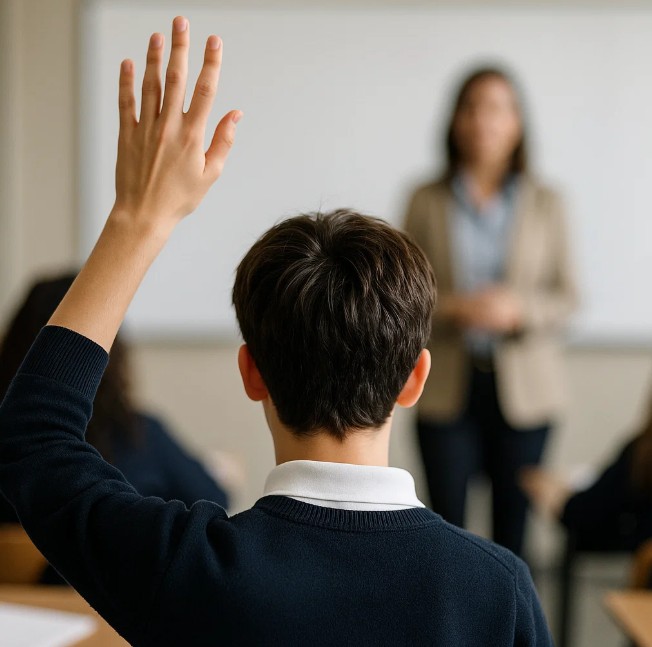
In 1931, an article appeared in the British newspaper ‘The Times’ that quoted Mahatma Gandhi as saying, “If we are to reach real peace in this world, we shall have to begin with the children”.
However, throughout history, there are times when humanity bears witness to events so profoundly upsetting and catastrophic that adults struggle with how to even begin explaining them to young people.
The preeminent humanitarian catastrophe of our time is unarguably Gaza, where more than 70% of the victims are women and children, making this conflict unique from others raging elsewhere.
On 22 August, the Integrated Food Security Phase Classification (IPC) Famine Review Committee confirmed that Gaza City and surrounding areas are officially suffering from famine, adding it is likely to spread in the coming weeks.
According to the UN-backed group, more than 514,000 people are experiencing famine, with the number due to rise to 641,000 by the end of September.
Teachers lacking professional guidance
Australia’s peak teachers’ union says teachers are having to help students make sense of complex, confronting global events, often without the resources or professional guidance needed.
“They are trying to teach empathy, critical thinking, and civic understanding in a deeply polarised climate, where even raising these issues can attract scrutiny or backlash, from the public, from parents and from education departments,” Australian Education Union federal president, Correna Haythorpe said in a statement.
The AEU is calling for schools to be given practical resources, such as multi-perspective lesson plans and PD to help teachers address sensitive topics in a trauma-informed, age-appropriate way. The union also highlighted the need for urgent, explicit protections for staff leading respectful, curriculum-aligned discussions, especially those fearing backlash or disciplinary action.
“Australian teachers must be given the professional trust, support, and protection they need to teach with courage, care and conscience,” Haythorpe said.
Young people are taking action
Studies show a growing number of studies show that young Australians are becoming increasingly political – a trend highlighted by the thousands of students who continue attending public protests to demand humanitarian assistance to hundreds of thousands of civilians who are starving in Gaza.
On August 6, the National Union of Students endorsed a nationwide student referendum on Palestine, censuring the Australian Government for its “complicity in the genocide in Gaza” and demanding an end to all weapons sales to Israel by Australia and Australian companies.
The Union also called for the Australian Government to place sanctions on Israel over what it called “a calculated mass starvation campaign by the Netanyahu Government on the people of Palestine.”
The referendum sets in motion mass meetings of students on campuses across the country from 20-28 August in scenes that will be reminiscent of the Pro-Peace demonstrations that took place in 2024 at university campuses in Australia and more than 25 other countries worldwide.
The student action is likely to be emboldened by fresh reports that the Australian Government has announced it will recognise Palestinian statehood at the United Nations General Assembly in September, joining 147 of the 193 member states of the UN.
“Australia will recognise the state of Palestine. Australia will recognise the right of the Palestinian people to a state of their own, predicated on the commitments Australia has received from the Palestinian Authority,” Albanese said.
“A two-state solution is humanity’s best hope to break the cycle of violence in the Middle East and to bring an end to the conflict, suffering and starvation in Gaza.”
Where should teachers begin?
Aftab Erfan, Executive Director of SFU Centre for Dialogue and Associate Member at the Simon Fraser University’s School of Public Policy, said when it comes to discussing the humanitarian catastrophe in Gaza in the classroom, it is understandable that many teachers might feel torn between two very relatable feelings.
“In connection with the war in Gaza, I often wonder whether it is more unsafe to address it in the classroom – and risk putting my foot in my mouth – or to not address it at all – and risk side-stepping the real concerns of my students and their world. Both concerns are legitimate,” Erfan told The Educator.
“When I choose to engage the topic, I find that, ironically, leaning into my trepidation is essential because it keeps me sensitive and on my toes.”
Erfan says one way to make the task more manageable is to admit to herself and to her students that on this topic she is a learner.
“My knowledge, like theirs, is incomplete. And so, I read, alongside them, at least two different accounts of the history, two different versions of the news,” she said.
“This is a chance to broaden the lens – to start a conversation about the different realities that are revealed by different sources of information, and the polarisation that ensues from being exposed to different narratives.”
‘Real peace begins with the children’
Erfan said the war in Gaza can be “an illustration of the connection between the present and the past – with the more familiar topic of WWII looming large in the background.”
“For older students, it can also be an entry point into the complexities of the concept of Indigeneity – and the multiple claims to it – outside of settler society contexts,” she said.
“For younger students, it might be a way to explore the resonance with WH Auden’s teaching, which brings it right back to the schoolyard: ‘I and the public know what all schoolchildren learn, those to whom evil is done do evil in return.’”

